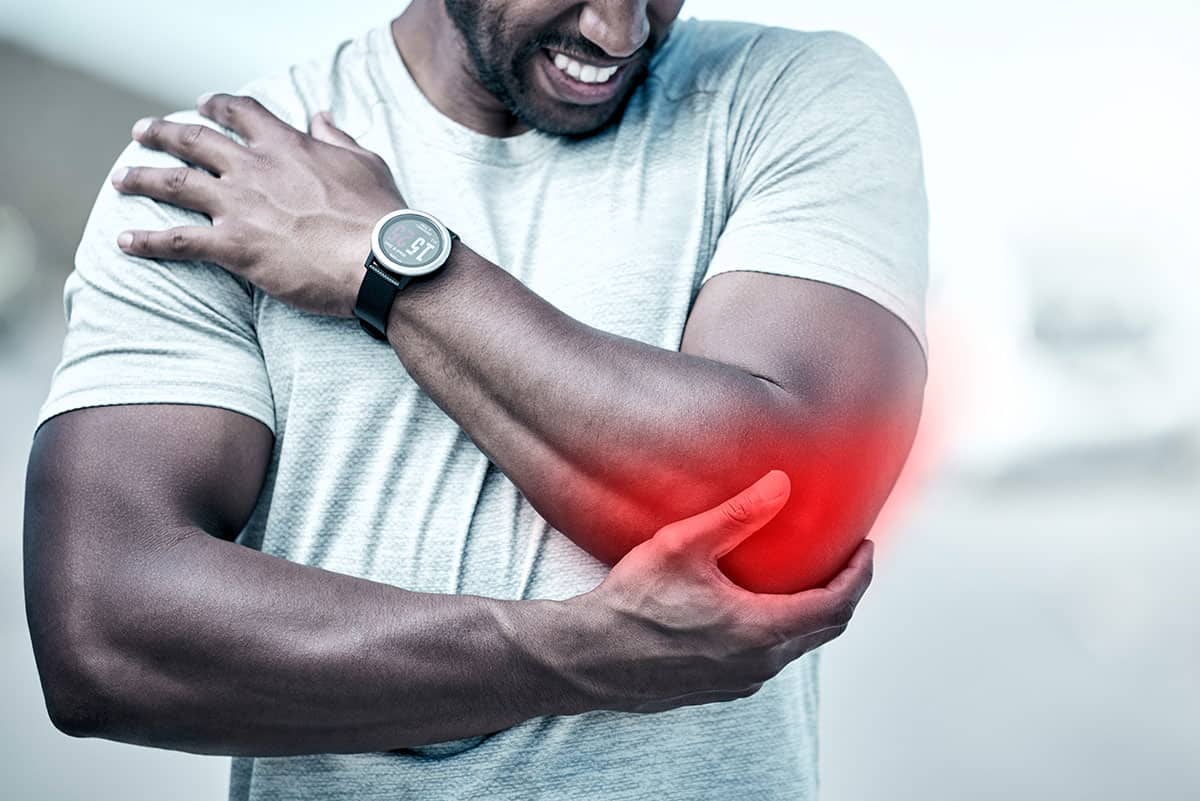Elbow Pain
At Kennedy Health, we specialize in providing comprehensive elbow pain relief, helping you overcome discomfort and regain optimal function. Our experienced medical professionals are dedicated to diagnosing and treating various causes of elbow pain, ensuring personalized care and effective relief.
Causes of Elbow Pain
Tennis Elbow (Lateral Epicondylitis)
Repetitive motions, such as swinging a tennis racket or using a screwdriver, can strain the tendons on the outside of the elbow, leading to inflammation, pain, and tenderness.
Golfer’s Elbow (Medial Epicondylitis)
Activities involving repetitive wrist flexion and forearm rotation, like golfing or swinging a baseball bat, can strain the tendons on the inside of the elbow, resulting in pain and tenderness.
Elbow Bursitis
Inflammation of the bursae, fluid-filled sacs that cushion the bones, tendons, and muscles around the elbow joint, can cause swelling, pain, and limited range of motion.
Elbow Arthritis
Osteoarthritis, rheumatoid arthritis, or post-traumatic arthritis can cause chronic elbow pain, stiffness, and inflammation due to cartilage degeneration or autoimmune responses.

Types of Diagnoses and Conditions
Tennis Elbow
Lateral epicondylitis is characterized by pain on the outer side of the elbow and forearm, often worsened with gripping or lifting activities.
Elbow Bursitis
Inflamed bursae around the elbow joint can lead to swelling, tenderness, and limited mobility.
Golfer’s Elbow
Medial epicondylitis causes pain on the inner side of the elbow and forearm, particularly aggravated by gripping, flexing, or pronating the wrist.
Elbow Tendonitis
Inflammation or irritation of the tendons in the elbow, such as triceps or biceps tendonitis, can cause localized pain and discomfort.
Symptoms Associated with Elbow Pain
Pain and Discomfort
Persistent or intermittent elbow pain, ranging from dull aches to sharp, stabbing sensations, often worsened with movement or specific activities.
Tenderness and Swelling
Increased sensitivity to touch around the affected area, accompanied by visible swelling or inflammation.
Limited Range of Motion
Difficulty fully extending or flexing the elbow, reduced grip strength, or a feeling of elbow stiffness.
Weakness or Instability
Reduced strength in the elbow joint or a sense of instability during activities involving forearm movement or gripping.
Treatment Options
Medication Management
Nonsteroidal anti-inflammatory drugs (NSAIDs), pain medications, or corticosteroids may be prescribed to manage pain, reduce inflammation, and improve elbow function.
Physical Therapy
Our experienced physical therapists design personalized exercise programs to improve elbow strength, flexibility, and stability, reducing pain and enhancing mobility.
Elbow Bracing or Splinting
Braces or splints can provide support and immobilization to relieve stress on the affected tendons or joints and promote healing.
Lifestyle Modifications
Our medical professionals provide guidance on modifying activities, ergonomic adjustments, and techniques to avoid repetitive stress on the elbow joint.
Injections
Intra-articular injections, such as corticosteroids or hyaluronic acid, may be recommended to provide localized pain relief, reduce inflammation, and improve joint function.
Extracorporeal Shockwave Therapy (ESWT)
ESWT utilizes high-energy sound waves to stimulate healing and reduce pain in chronic cases of tennis elbow or golfer’s elbow.
Surgical Intervention
In severe cases where conservative treatments are ineffective, surgical options, such as tendon repair, debridement, or joint replacement, may be considered to alleviate pain and restore function.

Take the first step toward effective elbow pain relief. Contact Kennedy Health today to schedule a consultation and explore the treatment options available to help you find relief, regain mobility, and embrace an active lifestyle. Trust our expertise and commitment to your well-being as we guide you on the path to a healthier, more comfortable future.

